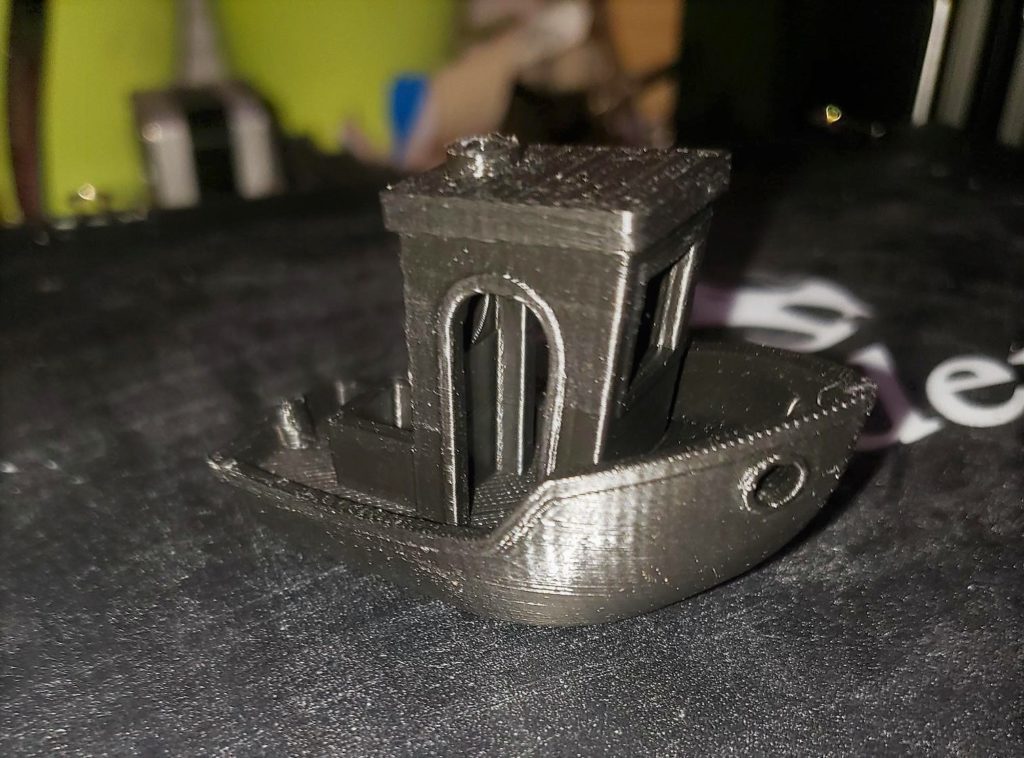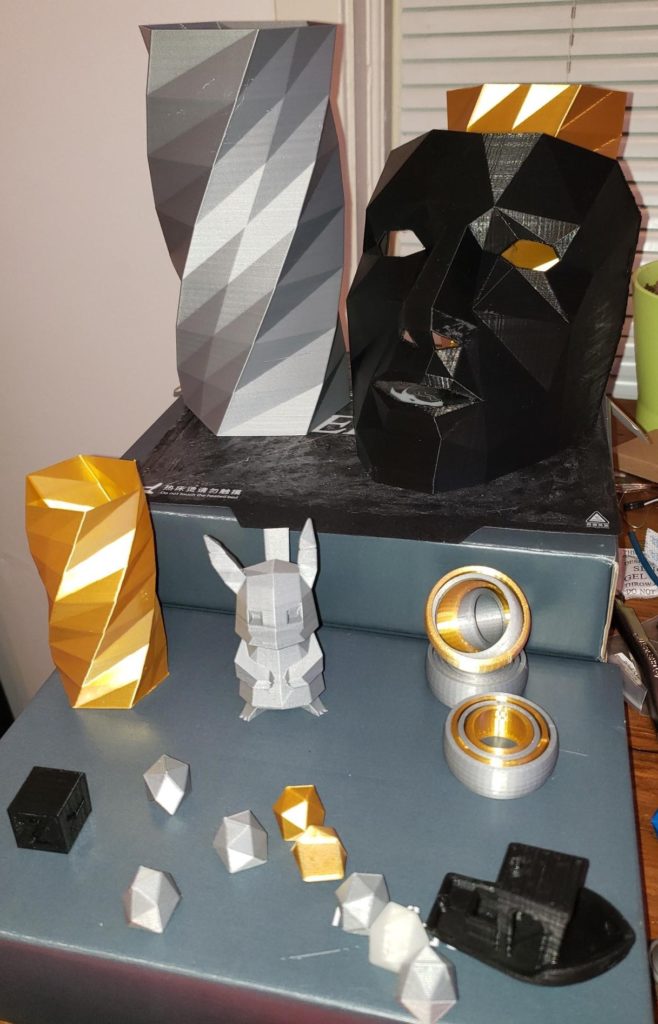I’ve been interested in the development of 3D printing for a few years, but the cost to get into the “hobby” was out of my price range, with most machines costing upwards of $1000 or more. Late last year I started seeing more people pop up with reviews and tips on various less expensive machines, bringing a purchase into the realm of possibility. After looking up the various options, I settled on a Creality Ender 3 for $189 from a Chinese distributor and bought it just after Christmas.
Before I get any further, let me take a second to explain how 3D printers (specifically fused filament fabrication) work. 3D printers are essentially devices that use very precise motors to push around a heated nozzle in three-dimensions. It pushes molten plastic into a very thin line that dries almost immediately, and it slowly builds the product from the ground up. The best analogy is that it’s like building a model out of LEGO, only instead of the already-formed bricks, you’re using molten plastic.
Fused filament fabrication has been around for a while, but it’s never been a cost-effective way to make most plastic parts, which are often created by putting molten plastic in a mold and vacuum sealing it until the plastic covers the inside walls of the mold. Where it really succeeds is in prototyping, where you can create a one-off part to test if the dimensions are going to work for what you want, or the creation of something that would not sell well enough to set up the processes necessary for other plastic manufacturing.
Mine took nearly a month to arrive (during which I learned that most Chinese shippers don’t bother with super-accurate tracking information, as I didn’t receive a tracking number until 2 days before it arrived), and about two hours to assemble. It was made from extruded aluminum, with many off-the-shelf parts to save as much money as possible. I spent another day updating the firmware to add a very necessary and overlooked safety feature that would shut the machine down if the temperature sensor had a failure. Then I began printing!
The printing material I’ve used thus far is PLA (polylactic acid), which is a low-temperature melting plastic recommended for most applications where overall strength isn’t necessary. There are others, but they have their own quirks and aren’t recommended for beginners. I began by printing some calibration items to figure out what adjustments were needed.
Then, I began printing my first big project: A series of parts to create an enclosure for the printer to keep temperatures more stable and to make it quieter. I’ve also bought a bunch of better parts to upgrade the printer and improve the quality.
Overall, I’m very impressed with this new machine, and I look forward to learning even more about how to use it.



